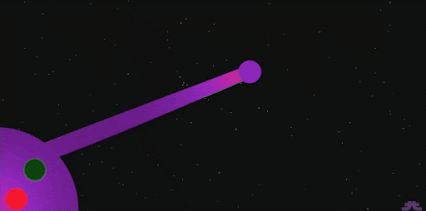Introduction to Quantum Electrodynamics and Quantum Chromodynamics
INTRODUCTION TO
QUANTUM
ELECTRODYNAMICS
AND QUANTUM
CHROMODYNAMICS
View my previous article here -
View the next article here -
-----------------------------------------
We have seen earlier that each nucleon i.e. proton and neutron has 3 quarks. These quarks travel nearly at the speed of light. If such a small particle moves at super-high speeds, we need an ultra mega strong force to hold it together. Hence, the strong force, the fundamental force which is believed to be the strongest force, is what binds these quarks together.
QUANTUM ELECTRODYNAMICS:
- A theory that talks about how electrically charged particles interact by "shooting" photons back and forth between each other.
- It is considered to be the simplest interaction where a charged particle like an electron emits a photon and then recoils.
QUANTUM CHROMODYNAMICS:
- Inside the nucleons, however, there mainly exists the strong force charge, which is considered to be a colour charge.
- It is believed to have been made up of three colours - red, blue and green.
- Quarks exchange these coloured particles, which are known as gluons.
- Just as we have the Quantum Electrodynamics (QED) for the electromagnetic force, we have the Quantum Chromodynamics (QCD) for the strong force.
Gluons interact with each other due to the coloured charge, however, photons are completely oblivious of each other's existence.
While the electromagnetic force is like magnets, the strong force is like a rubber band.
As the rubber band is stretched, the force gets stronger between the two ends.
If we hit the quark hard enough to send it careening out, the force between the quark and the nucleon acts like a rubber band that is continuously stretching.
We call this a "string of colour".
If we hit the quark hard enough, we can break this string. But, the energy stored in this string converts into matter and antimatter, specifically - quarks and antiquarks. This process keeps going on.
In the end, the particles pair up, travelling more or less in the same direction as the quark that got knocked out of the nucleon.
This blast of particles is known as a jet.
-----------------------------------------
View the next article here -
View my previous article here -
View more structured order of the articles here -
-----------------------------------------
Feel free to ask/share anything additional in the comments section!
I am still learning Particle physics, but will try my best to answer your questions :)
Kindly let me know about any errors here.
Kindly let me know about any errors here.
You can also share anything additional for this article here.
View my previous article here -
View the next article here -
View more structured order of the articles here -
See more articles here -
Solve brain teasers! View my other blog here-
With Warm Wishes,
Lavanya





Comments
Post a Comment